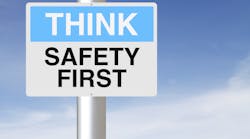The dollar amounts for the maximum civil penalties employers can be assessed for violations of Occupational Safety and Health Administration (OSHA) rules will spike upward on August 1.
Congress had not raised the dollar figures since 1990, but last year included a provision in budget legislation allowing federal agencies to increase their fines and penalties to match inflation. That 26-year combination inflation rate total of 78% was used to come up with the new amounts announced by OSHA on July 1.
The new amounts will apply only to civil penalties assessed after August 1, 2016, for associated violations that occurred after November 2, 2015, the date of enactment of the budget bill.
Attorney John F. Martin of the law firm of Ogletree Deakins believes this time gap may run afoul of the U.S. Constitution’s prohibition against ex post facto laws, which bans imposition of punishment for an act which was not punishable at the time it was committed, or a punishment in addition to what was then prescribed.
Martin points out that the U.S. Supreme Court has ruled that administrative civil penalties like those OSHA imposes on employers “are intended to punish, and label defendants wrongdoers,” which means they could be found to fall under the ex post facto ban.
The old and new amounts are:
• Other-than-serious violation, from $7,000 to $12,471.
• Serious violation, from $7,000 to $12,471.
• Repeat violation, from $70,000 to $124,709.
• Willful violation, from $70,000 to $124,709.
• Failure-to-abate violation, from $7,000 to $12,471 per day.
• Violation of a posting requirement, from $7,000 to $12,471.
Civil penalties imposed in what are defined as State Plan States—the 25 states and territories that have their own OSHA-approved occupational safety and health plans—are required to adopt the same increases as well.
“Whether the higher penalty amounts will discourage bad actors from regarding OSHA citations as a cost of doing business remains to be seen,” Martin observes. “The agency no doubt welcomes these provisions, as it has been very open about its desire to issue six-or-seven figure penalties as the Environmental Protection Agency can for violations of the Clean Water Act or Clean Air Act. Higher penalty amounts may also lead to an increase in the number of cases contested and litigated.”




